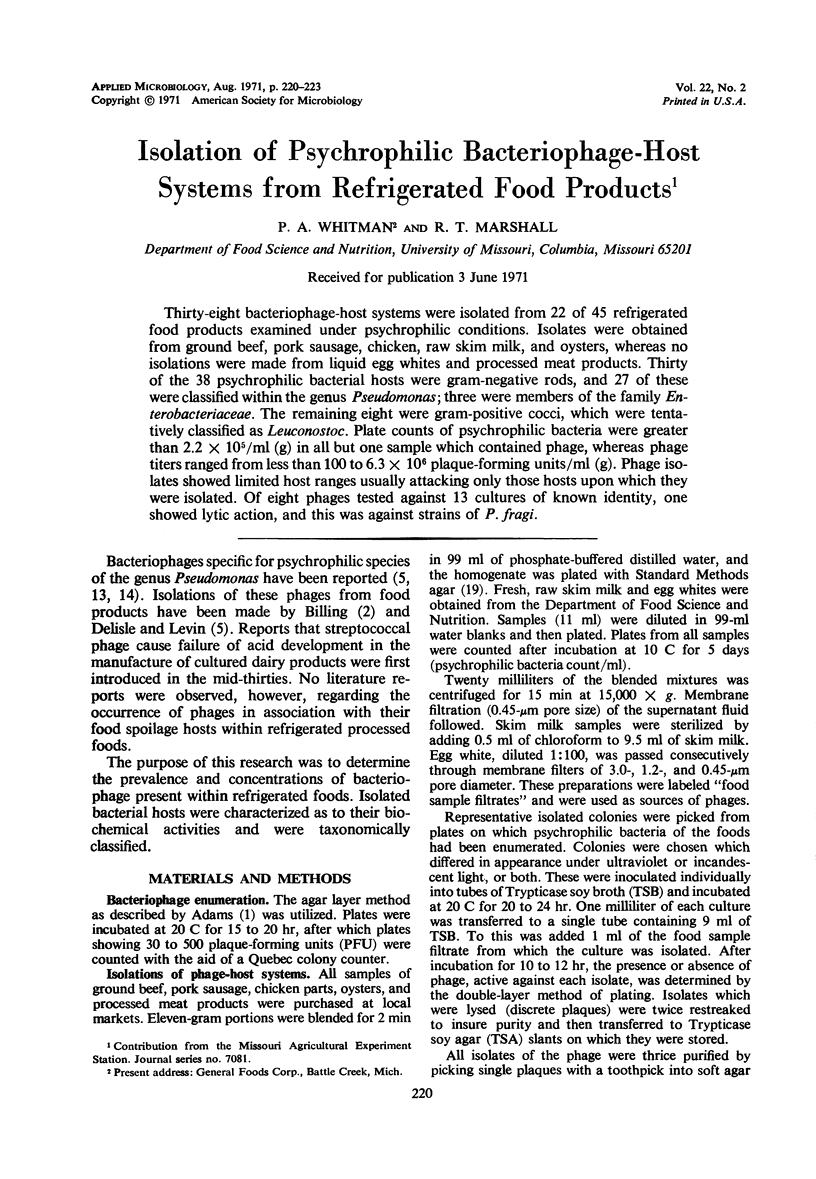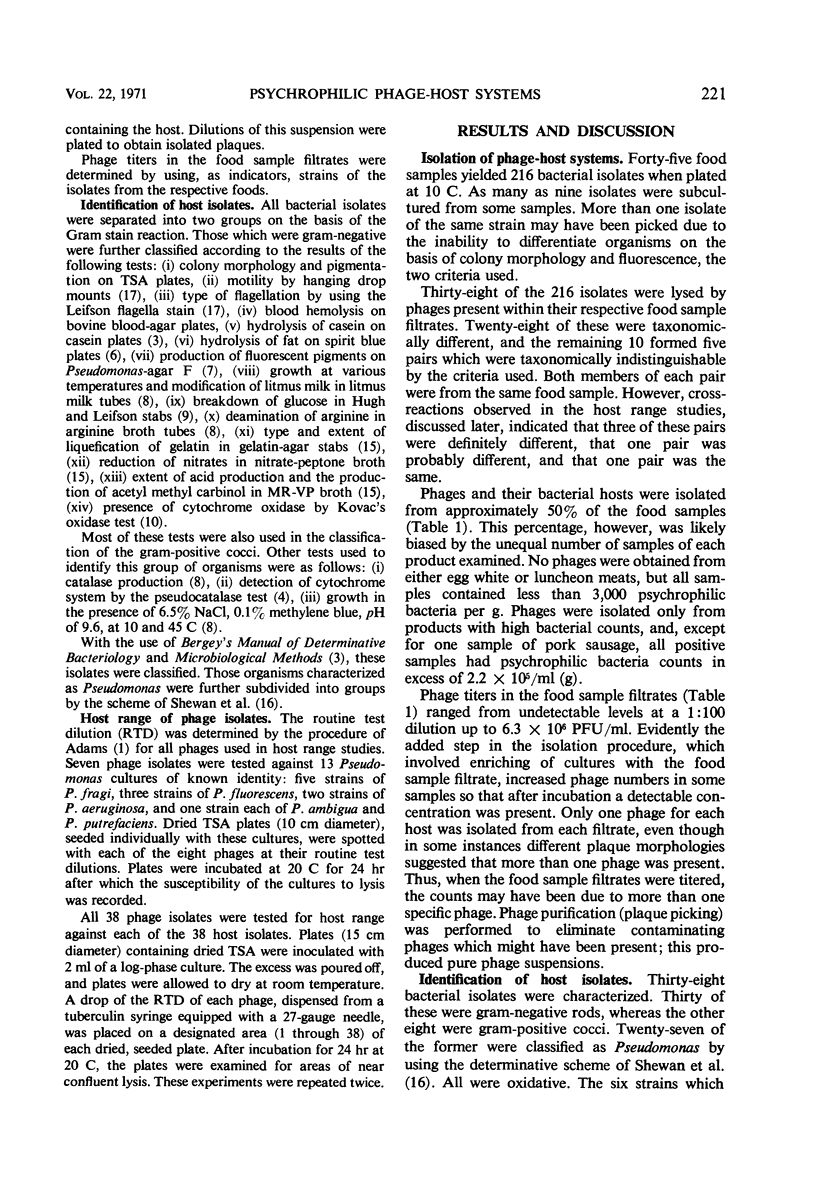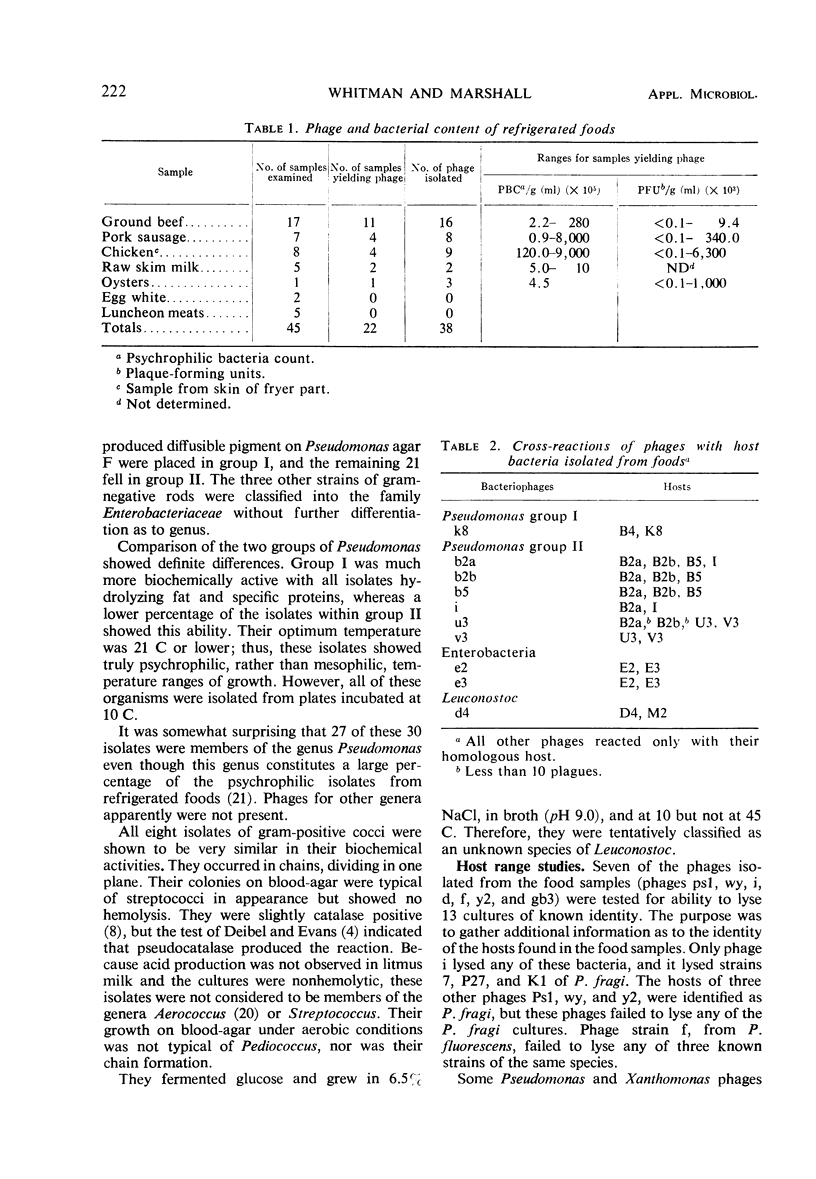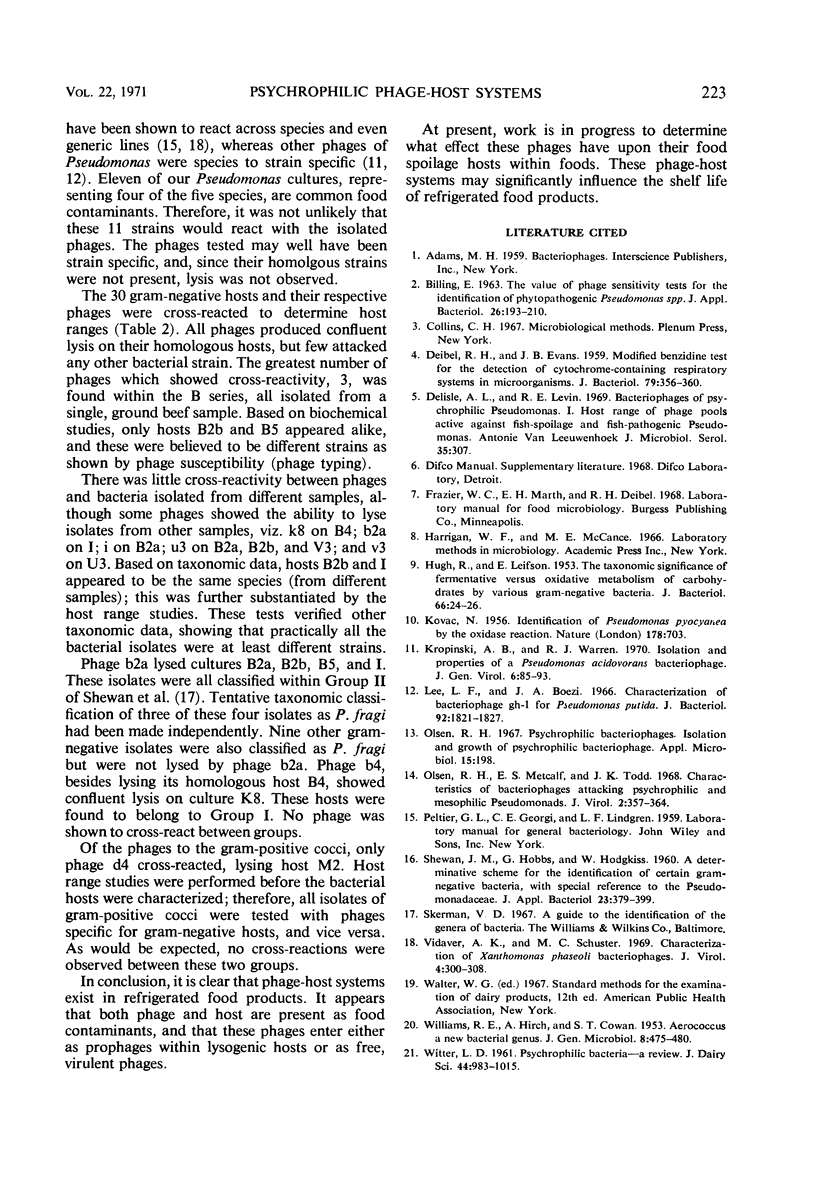Abstract
Thirty-eight bacteriophage-host systems were isolated from 22 of 45 refrigerated food products examined under psychrophilic conditions. Isolates were obtained from ground beef, pork sausage, chicken, raw skim milk, and oysters, whereas no isolations were made from liquid egg whites and processed meat products. Thirty of the 38 psychrophilic bacterial hosts were gram-negative rods, and 27 of these were classified within the genus Pseudomonas; three were members of the family Enterobacteriaceae. The remaining eight were gram-positive cocci, which were tentatively classified as Leuconostoc. Plate counts of psychrophilic bacteria were greater than 2.2 × 105/ml (g) in all but one sample which contained phage, whereas phage titers ranged from less than 100 to 6.3 × 106 plaque-forming units/ml (g). Phage isolates showed limited host ranges usually attacking only those hosts upon which they were isolated. Of eight phages tested against 13 cultures of known identity, one showed lytic action, and this was against strains of P. fragi.
Full text
PDF



Selected References
These references are in PubMed. This may not be the complete list of references from this article.
- DEIBEL R. H., EVANS J. B. Modified benzidine test for the detection of cytochrome-containing respiratory systems in microorganisms. J Bacteriol. 1960 Mar;79:356–360. doi: 10.1128/jb.79.3.356-360.1960. [DOI] [PMC free article] [PubMed] [Google Scholar]
- Delisle A. L., Levin R. E. Bacteriophages of psychrophilic pseudomonads. I. Host range of phage pools active against fish spoilage and fish-pathogenic pseudomonads. Antonie Van Leeuwenhoek. 1969;35(3):307–317. doi: 10.1007/BF02219151. [DOI] [PubMed] [Google Scholar]
- HUGH R., LEIFSON E. The taxonomic significance of fermentative versus oxidative metabolism of carbohydrates by various gram negative bacteria. J Bacteriol. 1953 Jul;66(1):24–26. doi: 10.1128/jb.66.1.24-26.1953. [DOI] [PMC free article] [PubMed] [Google Scholar]
- KOVACS N. Identification of Pseudomonas pyocyanea by the oxidase reaction. Nature. 1956 Sep 29;178(4535):703–703. doi: 10.1038/178703a0. [DOI] [PubMed] [Google Scholar]
- Kropinski A. M., Warren R. A. Isolation and properties of a Pseudomonas acidovorans bacteriophage. J Gen Virol. 1970 Jan;6(1):85–93. doi: 10.1099/0022-1317-6-1-85. [DOI] [PubMed] [Google Scholar]
- Lee L. F., Boezi J. A. Characterization of bacteriophage gh-1 for Pseudomonas putida. J Bacteriol. 1966 Dec;92(6):1821–1827. doi: 10.1128/jb.92.6.1821-1827.1966. [DOI] [PMC free article] [PubMed] [Google Scholar]
- Olsen R. H. Isolation and growth of psychrophilic bacteriophage. Appl Microbiol. 1967 Jan;15(1):198–198. doi: 10.1128/am.15.1.198-.1967. [DOI] [PMC free article] [PubMed] [Google Scholar]
- Olsen R. H., Metcalf E. S., Todd J. K. Characteristics of bacteriophages attacking psychrophilic and mesophilic pseudomonads. J Virol. 1968 Apr;2(4):357–364. doi: 10.1128/jvi.2.4.357-364.1968. [DOI] [PMC free article] [PubMed] [Google Scholar]
- Vidaver A. K., Schuster M. L. Characterization of Xanthomonas phaseoli Bacteriophages. J Virol. 1969 Sep;4(3):300–308. doi: 10.1128/jvi.4.3.300-308.1969. [DOI] [PMC free article] [PubMed] [Google Scholar]
- WILLIAMS R. E., HIRCH A., COWAN S. T. Aerococcus, a new bacterial genus. J Gen Microbiol. 1953 Jun;8(3):475–480. doi: 10.1099/00221287-8-3-475. [DOI] [PubMed] [Google Scholar]


